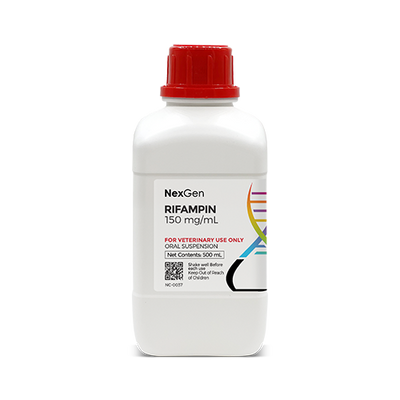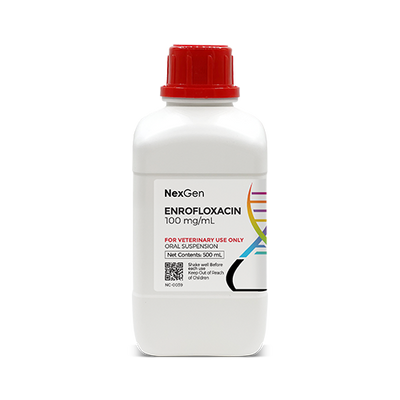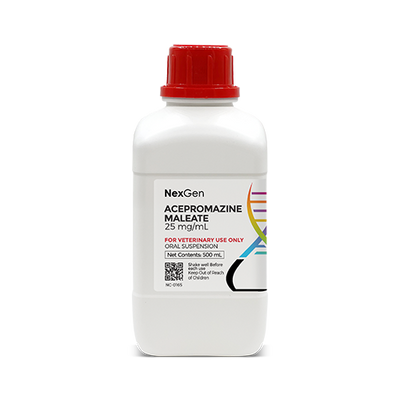
Methocarbamol 250 mg/mL, Oral Suspension, (500mL)
Login for pricing
- Brand
- Mixlab
- SKU:
- NC-0348
- Product Type:
- Suspension
- Size:
- 500ml
- Administration:
- Oral
Exertional myopathies in horses represent a syndrome of recurring exercise-associated muscle damage that arises from a variety of causes. They are highlighted by instances of muscle fatigue, pain, or cramping associated with exercise.1 These myopathies result in the degeneration of striated muscle, which is referred to as exertional rhabdomyolysis (ER).
The syndrome, known for many years as “tying-up”, is a condition that can be a performance-limiting or career-ending problem for racing horses.2 It has been reported since humans first engaged horses for work, recreation and entertainment, and approximately 3% of exercising horses are reported as having experienced an episode of ER in the last 12 months.2
Clinical Signs of Exertional Myopathy
Common characteristics of ER may include:
- Excessive sweating
- Increased breathing rate
- Rapid heartbeat
- Reluctance or refusal to move
- Firm, painful hindquarters2
The above signs are usually seen shortly after a horse begins to exercise. Their severity can vary from horse to horse, and even between episodes. Severe episodes can involve muscle damage with kidney failure and recumbency. ER is often reported as being sporadic or chronic. Horses of any breed may develop ER, but it is common in Thoroughbreds and can be affected by temperament, sex, age, diet, exercise routines, and lameness.3
In severe cases, a horse may be reluctant or refuse to move, and may produce discolored urine due to the release of myoglobin from damaged muscle tissue. Episodes can vary from subclinical to severe, in which massive muscle necrosis and renal failure from myoglobinuria occurs.1
Exertional Myopathies: Diagnosis and Treatment
A diagnosis of exertional rhabdomyolysis is typically confirmed using blood screenings that test for two muscle proteins, creatine kinase (CK) and aspartate transaminase (AST). These proteins are used to determine the degree of muscle damage, due to the fact that when muscle cells are damaged, they release these proteins into the bloodstream.2 By determining the underlying form of ER that a horse is suffering from, specific management strategies can be used to control symptoms.2,3
Methocarbamol for ER in Horses
Contraindications include food animals, animals with renal disease (injectable forms), and animals with a hypersensitivity to methocarbamol.2 Adverse effects can include sedation, salivation, emesis, lethargy, weakness and ataxia.
NOTE: The Association of Racing Commissioners International Uniform Classification Guidelines for Foreign Substances has designated methocarbamol a CLASS 4 DRUG.
Where to buy Methocarbamol
Methocarbamol is available in the U.S. through pharmaceutical manufacturers and through veterinary custom compounding companies.
Methocarbamol carries several potential drug interactions. Please consult your veterinarian prior to beginning any treatment regimen.
FOR RX ONLY: A valid prescription from a licensed veterinarian is required for dispensing this medication.
1Merck Veterinary Manual.
2msu.edu.
3MacLeay JM, Sorum SA, Valberg SJ, Marsh WE, Sorum MD. Epidemiologic analysis of factors influencing exertional rhabdomyolysis in Thoroughbreds. American Journal of Veterinary Research. 1999 Dec;60(12):1562-1566. PMID: 10622169.


















